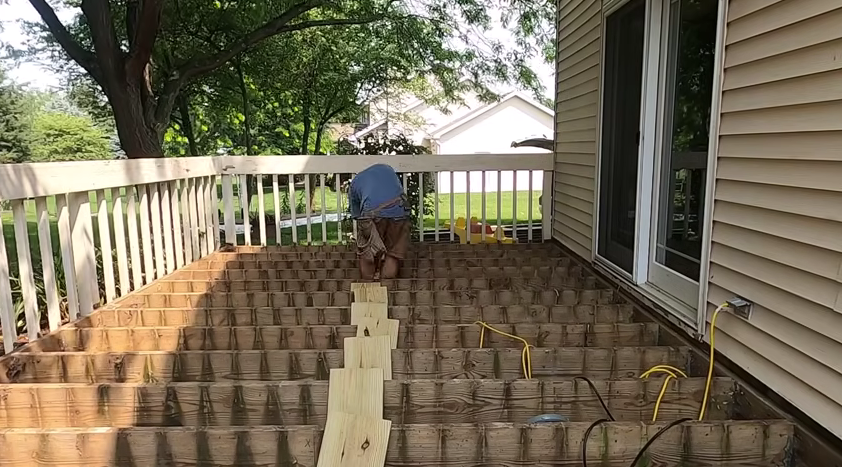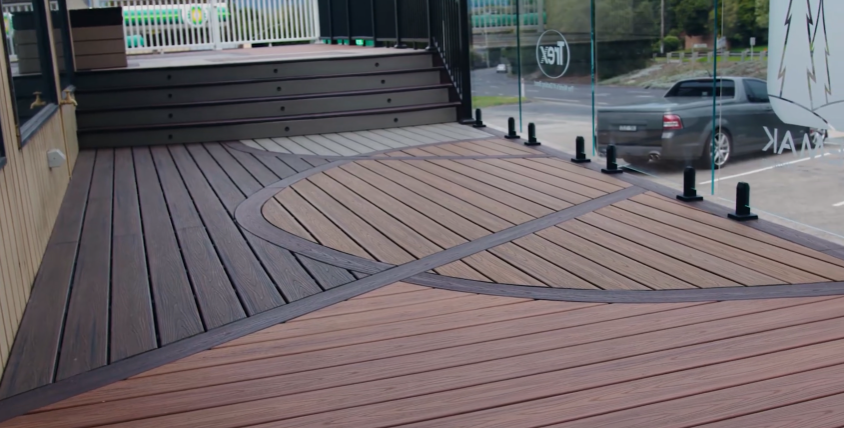Who doesn’t love an aesthetically pleasing area for outdoor activities in the form of a wooden deck? It’s a dream of every modern American house, but the main reason for giving up on this dream is the expensiveness of natural wood, not to mention the maintenance charges of such decking will put a hole in your pocket.This is where Trex decking comes into action. It is one of the most recognized names in composite decking, offering the natural look of wood without the ongoing maintenance it typically requires. Made from recycled plastic and wood fibers, Trex boards are designed to resist fading, staining, and warping, making them a long-lasting, eco-friendly choice.
Whether you're planning a small backyard upgrade or a full-scale outdoor living area, Trex combines durability, low maintenance, and design flexibility. In this guide, we’ll break down everything you need to know about Trex decking, from its cost and product lines to pros, cons, and whether it’s the right fit for your home.
What is Trex Decking Made Of?
Trex boards are made from 95% recycled materials. This includes plastic film and reclaimed wood fibers. Boards are wrapped in a protective cap that resists moisture and UV damage. The capped shell keeps the deck looking new for years. It also improves scratch and mold resistance.

Let’s go through various things which would convince you to:
Types of Trex Decking
Trex offers five main product lines. Each serves different needs and budgets.
Trex Enhance
Enhance is the most affordable option. It has a scalloped design, making it lightweight. Two subtypes are available: Basics and Naturals. It’s ideal for DIYers and budget-conscious homeowners.
Trex Select
Select is a step up in quality. It offers a classic wood look with a full board profile. It’s easy to clean and performs well in most climates. Great for basic decks with a timeless design.
Trex Transcend
Transcend is Trex’s premium composite line. It features rich colors and deep woodgrain textures. Boards are thicker and more resistant to wear. It’s perfect for high-traffic areas.
Trex Transcend Lineage
Lineage is an advanced version of Transcend. It includes heat-mitigating technology to stay cooler in hot weather. The color palette is inspired by nature and modern design trends.
Trex Signature
Signature is Trex’s luxury line. It uses aluminum instead of composite material. It’s ultra-durable, lightweight, and ideal for rooftop decks or sleek modern spaces.
Trex Extras and Accessories
Trex offers more than decking boards. It provides a complete outdoor system.
- Hidden Fasteners: Clean surface with no visible screws.
- Railing Systems: Composite, aluminum, and glass options.
- DeckLighting: Low-voltage LED lights for steps and railings.
- RainEscape: Under-deck drainage system to create dry spaces below.
These extras help homeowners customize their decks with added style and function.
Benefits of Trex Decking

Trex is a strong alternative to wood. It doesn't need painting, staining, or sealing. The boards don’t rot, warp, or attract termites.Trex is also eco-friendly, using recycled materials in every board. It comes with warranties of up to 50 years, depending on the product line. Its wide color range and realistic woodgrain finish offer great design flexibility. If you're planning to upgrade your outdoor space, exploring home improvement tips can help you make the most of Trex decking’s benefits while enhancing overall property value.
Cons of Trex Decking
Trex can be more expensive upfront. Some boards may feel hot in direct sunlight. Scratches may occur if heavy furniture is dragged across them. Proper spacing and ventilation are needed during installation. Despite these issues, many users find the long-term value worth the investment.
Trex Decking Installation
Trex can be installed with basic woodworking tools. Boards are cut like wood and attached with screws or hidden clips. Joists must be spaced properly, usually 16 inches apart. Expansion gaps are needed for temperature changes. For best results, professional installation is recommended.
Trex Decking Maintenance
Maintaining Trex is simple. Clean the surface with soap and water. Remove stains promptly, especially oil and food. Avoid bleach or high-pressure washing. Inspect the structure yearly and clear debris from between boards. This helps maintain ventilation and deck health.
Trex vs Wood Decking
Trex lasts longer and needs less care than wood. Wood decks often rot, crack, or attract pests. Trex stays strong for 25–50 years.Wood is cheaper at first but costs more in maintenance. Trex’s fade-resistant color and mold-proof shell give it an edge. It's also more eco-friendly and visually consistent.
Is Trex Decking Worth It?
Trex offers a strong return on investment. It’s great for homeowners who want style and function without the hassle of wood. With multiple product lines, there’s a Trex option for every budget. Over time, Trex can save thousands in upkeep and replacement.
Final Thoughts
Trex Decking is a smart choice for modern outdoor living. It delivers durability, low maintenance, and eco-friendly performance. Whether you're renovating an existing space or planning to build a home from scratch, choosing the right decking material is crucial for long-term value and aesthetic appeal. From budget-friendly Enhance to luxury Signature, Trex offers something for every need. Whether you're building a backyard retreat or a stylish rooftop space, Trex is built to last and impress.

